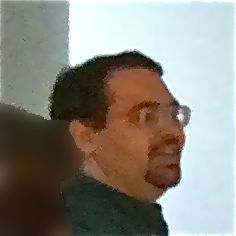 Still Water Senior Researcher John Bell has been named a 2013 HASTAC scholar, and he’s spending his time finding new ways to knit together data and the organizations that produce them.
Still Water Senior Researcher John Bell has been named a 2013 HASTAC scholar, and he’s spending his time finding new ways to knit together data and the organizations that produce them.
 Bell’s collaborations include the Media Ecology Project at Dartmouth, the Scalar publishing platform (USC), and numerous Still Water initiatives including The Pool, Variable Media Questionnaire, and the Digital Curation graduate program.
Bell’s collaborations include the Media Ecology Project at Dartmouth, the Scalar publishing platform (USC), and numerous Still Water initiatives including The Pool, Variable Media Questionnaire, and the Digital Curation graduate program.
HASTAC (Humanities, Arts, Science and Technology Advanced Collaboratory, pronounced “haystack”) is an organization of more than 10,000 individuals and institutions dedicated to innovative new modes of learning and research in education from kindergarten to post-graduate. As a HASTAC Scholar, Bell is among a cadre of elite digital humanities researchers investigating innovative methods to connect learners using the Internet and other digital tools.
 This builds off Bell’s research in linked systems and online pedagogy, from the Metaserver to the online badge platform he’s created for the New Media Department’s peer-to-peer tutorial system. The graduate certificate ICD program he helped design offers students a suite of 1-credit classes that make for a la carte approach to online education.
This builds off Bell’s research in linked systems and online pedagogy, from the Metaserver to the online badge platform he’s created for the New Media Department’s peer-to-peer tutorial system. The graduate certificate ICD program he helped design offers students a suite of 1-credit classes that make for a la carte approach to online education.
Bell documents his research on the HASTAC site, where he has recently posted on his digital humanities presentation to the AMIA (Association of Moving Image Archivists) conference, his contribution to the 2013 Digital Humanities Week, and a useful infographic about digital preservation.
One of Bell’s most recent posts asks how the strategy of crowdsourcing could be applied to the semantic web:
The core goal of MEP [Dartmouth’s Media Ecology Project] is finding ways to increase scholarly access to and use of media held in archives around the world. It does that by making the media held in those archives more discoverable through enhanced metadata and citation capabilities. We’re also tying archival media into analysis and publication tools like Scalar and MediaThread more directly than has been possible with pre-semantic web software.
But the question remains: if we are increasing the amount of metadata scholars can use to find and index media, where is the new metadata coming from? As more and more digitization projects come online the quantity of video available has outstripped the amount of time archivists can devote to making it discoverable. A key concern of any attempt to generate third-party metadata about archival collections is a question of what qualifies as good information. Crowdsourcing is an option that we’d like to make more common, but there are issues of provenance any time you try to crowdsource basic data.
We’ve explored several potential solutions to the provenance question, ranging from algorithmic trust systems to OBI badges awarded to those who produce great metadata.

RT @stillwaternet: Still Water’s 2013 HASTAC scholar @nmdjohn connects new media and education http://t.co/Mb6uOT9vek
Vince J. DiPilato liked this on Facebook.